Introduction: Unusual Uses for WD-40
WD-40 is a low viscosity solvent with an added lubricant, and probably the item found in almost every tool box and workshop around the world. The story goes that development of a corrosion prevention solution took 40 tries to create a water displacing formula, the name water displacement 40 stuck. The ubiquitous and most recognized brand of solvent/lubricant brings with it a lot of myths, and ire, regarding its efficacy.
This product is used in all kinds of ways, but there's something very important to consider before reaching for the blue can
WD-40 is primarily a petroleum-based volatile solvent that evaporates leaving behind a non-volatile lubricant
Meaning that the solvent penetrates and does its job removing grime and then evaporates and leaves behind a thin film of oil. It's important to know just what WD-40 is, and what it isn't.
For certain applications there's room for a product like WD-40, but most other times it's better to use a dedicated solvent first followed by a dedicated lubricant after. Just like a 2-in-1 shampoo and conditioner isn't the best at being a shampoo or conditioner, neither is WD-40.
An important distinction with WD-40:
Not all WD-40 is the same. Though the cans below look similar, they are very different. The MSDS for WD-40 shows that it's mostly a penetrating solvent with some oil once the solvent is gone. There are other varieties of WD-40 on the market that do different things, specifically a version that is a lubricant that has no solvent (see can on the right in the picture below).

If you're looking for just a lubricant then standard WD-40 is not the right tool for the job, which is where some confusion and myths arise about this product. In this Instructable we'll focus on the ubiquitous blue can of WD-40 (solvent with some oil aftermath) and explore actual unusual uses.
Whatever your feelings on this sometimes slippery substance, you're sure to find some unusual uses for WD-40 below.
Step 1: De-grease Your Hands
Since WD-40 is mostly a solvent, why not use it on more than just stuck nuts and bolts? Applying a spray of solvent to your greasy hands can help cut into the grime and clean your hands before applying a soap lather.
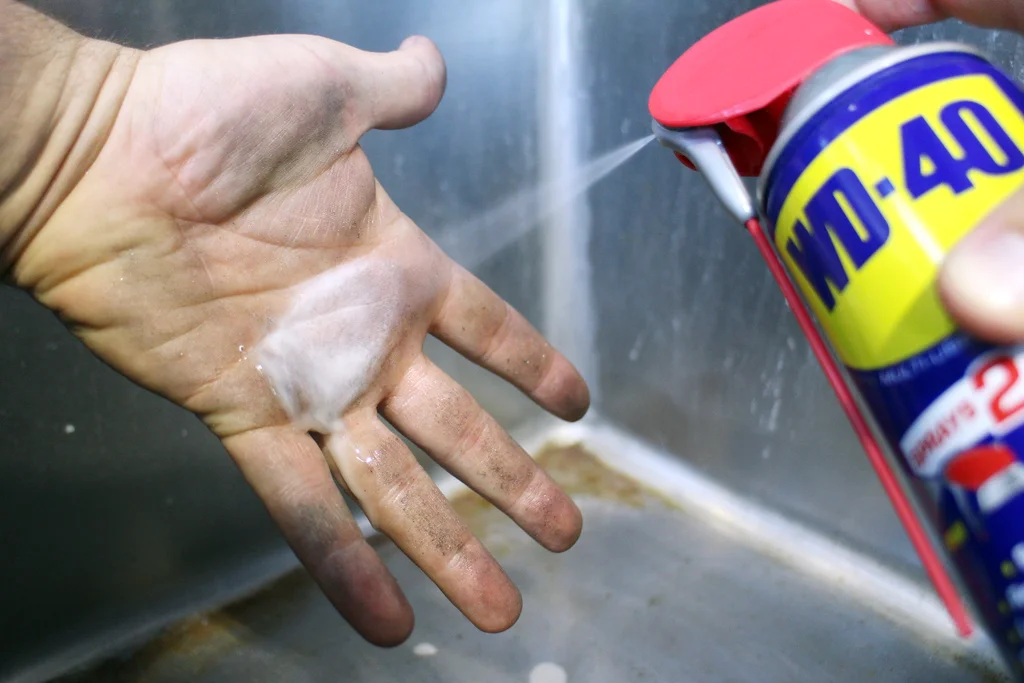
Spray your hands over a trash bin or other contained area and then rub your hands together, working the solvent into your greasy hands with your fingers to remove any grease buildup.
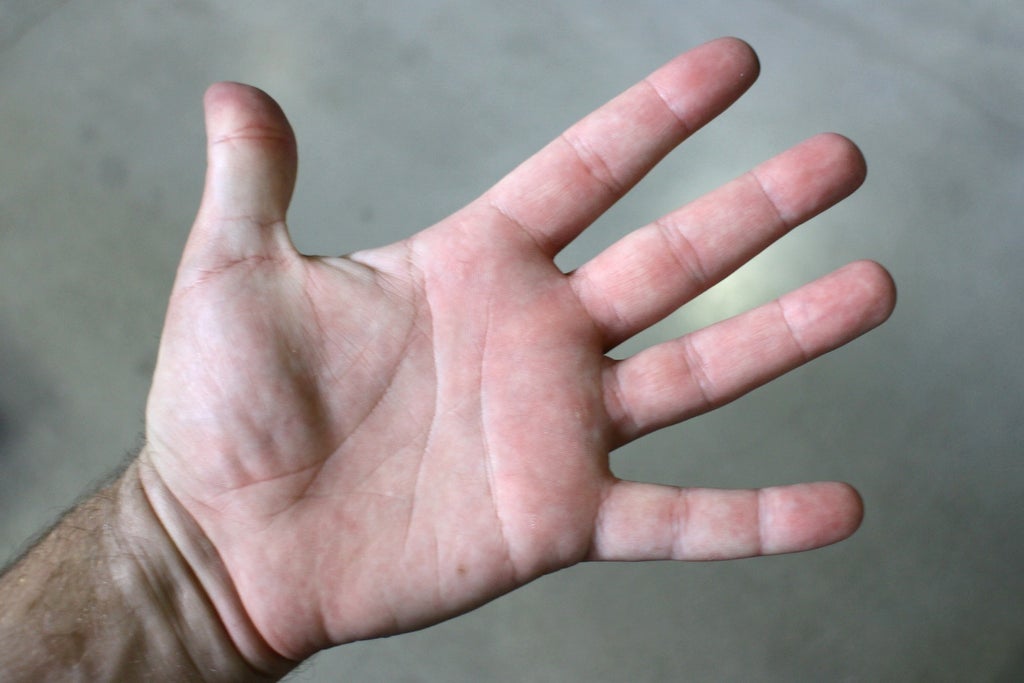
After your hands have been degreased, head over to your wash basin and wash your hands with plenty of soap to remove the remaining lubricant the WD-40 left.
Step 2: Remove Stickers / Decals
Removing stickers is one of my least favorite tasks. No matter how careful I am I always manage to rip the sticker, making removal so much more difficult. WD-40 to the rescue!

Blast your sticker with this slippery lubricant and let sit for about 5 minutes. I find that saturating a paper towel and leaving that on top of the sticker works great at keeping the lubricant on the sticker and contained.

After a few minutes you should see a notable change in the sticker as it's absorbed the WD-40, and should peel right off.
Step 3: Crayon + Marker Removal
When regular cleaner just won't do, WD-40 steps in to make cleanup easier. Wax crayons naturally repel moisture, but WD-40 can tackle this challenge.
Spray crayon marked area and let sit for a few minutes (saturating a square of paper towel to stick to vertical surfaces can help), then rub area with a lint free cloth to remove the crayon. (Thanks for the pictures, Troy)

After cleaning you may see some coloration from the crayon, if so repeat the process. After the crayon has been removed, clean the wall with regular household cleaner to and a cloth remove the WD-40 residue.
As with all stain removal solutions, test in an inconspicuous area first to ensure you won't damage your walls.
Step 4: Remove Permanent Marker From Walls, and Other Non-porous Surfaces (Sometimes)
The solvent in WD-40 is strong enough to penetrate and remove permanent marker, but the surface that the marker is on make a huge difference. If the marked surface has a glossy paint coating, like the walls in kitchens and washrooms, you're likely to get the marker off. Ditto with tile. However, if your wall has a matte finish you probably won't get all the marker off using WD-40.

Soak a paper towel or rag with WD-40 and apply it directly onto the permanent marker on the wall. Allow the solvent to make contact with the wall for about 30 seconds, then gently rub the area in small circular motions. If you apply too much pressure right away you risk smearing the marker around the wall, so go slow and apply more pressure to the rubbing motion once most of the marker has been removed.
If you have a matte or porous finish then the image above is likely as good as the cleanup is going to get. If you're determined to remove the marker using this method then apply more WD-40 and keep scrubbing.
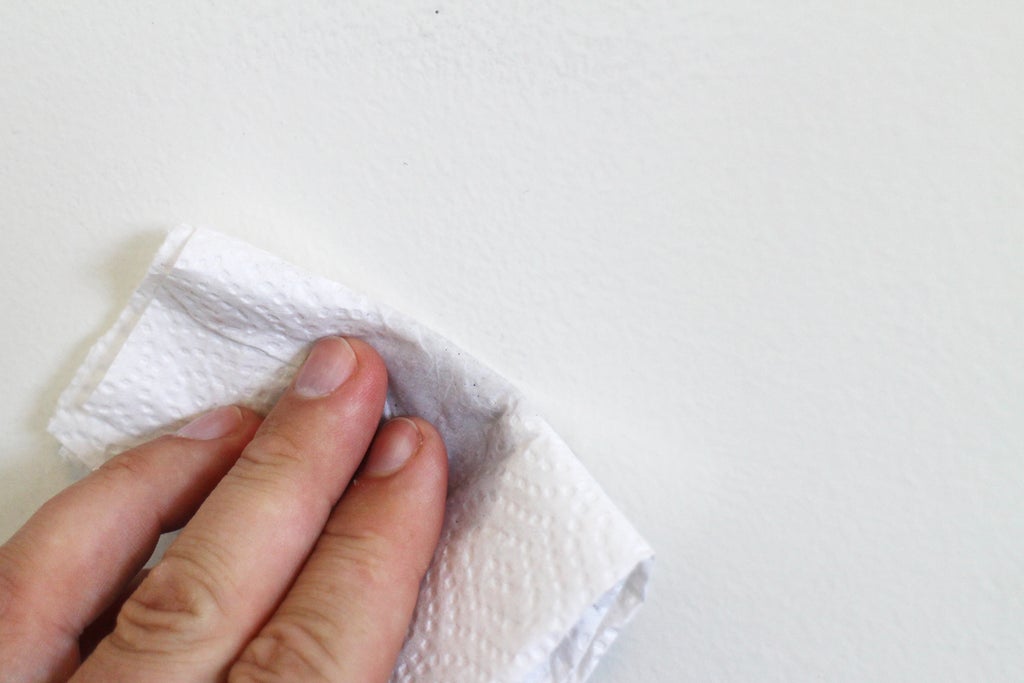
Repeat the process of soaking a rag in WD-40 and applying it directly to the affected area, letting it sit for a few seconds before buffing and removing the marker. I was able to remove the marker here on a semi-gloss wall with under 5-minutes of work.
Step 5: Keep Shovel Snow Free
Since WD-40 has lubricating properties, use it to keep things you want clean nice and slippery. Spraying some WD-40 on your snow shovel face can clean the shovel face and prevent snow from sticking to whatever was scooped up previously, and the light oil finish after the solvent has evaporated keeps the shovel nice and slippery. (nice boots there, Jessy!)
Spray a light coating over the shovel face and wipe off to remove any substances that might be on the shovel. Then apply a second light coat and let stand for about a minute to let the solvent evaporate. Then, you're ready to go! Depending on how much shoveling you're doing you may need to reapply, so keep the spray can handy.
Step 6: Remove Stuck Ring
Injured knuckles can swell, so timely removal of rings on fingers becomes critical. Since many banged knuckles come from a workshop, WD-40 is a handy remedy that can quickly slip a tight ring off a fat finger.
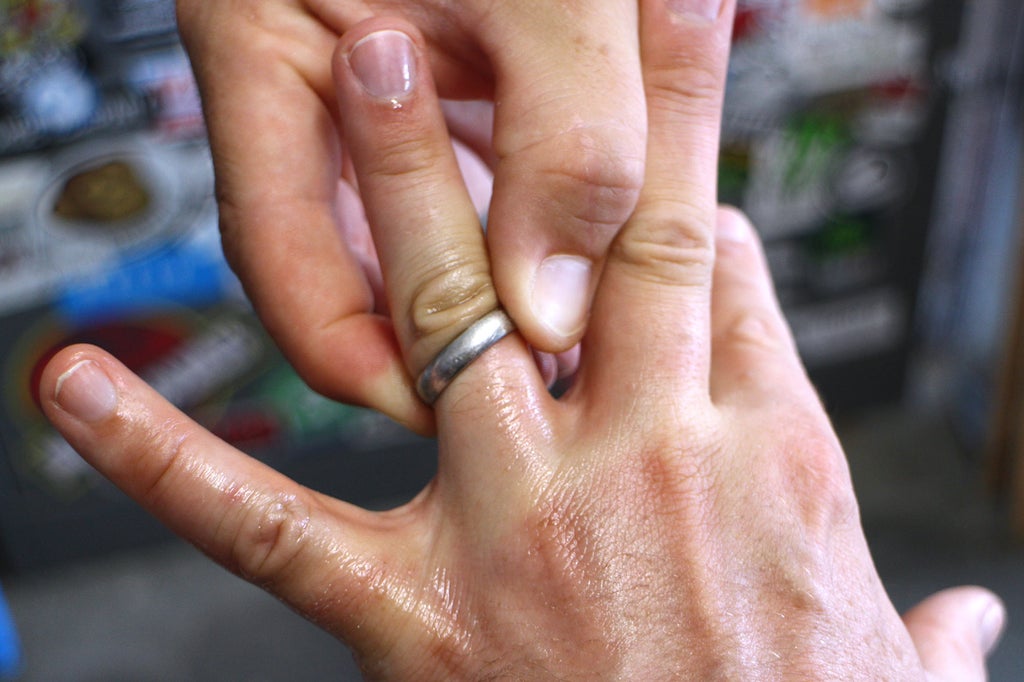
Spray your ring with a liberal dose of WD-40 and then work the ring around your finger, allowing the low viscosity oil to run in between your ring and skin. The oil will lube up your finger and (hopefully) let your finger slip out from the constricting ring.
Step 7: Clean Stainless Steel Sinks
Though stainless steel is a robust material for the kitchen, it can get watermarks and fingerprint stains. Blast your sink with WD-40 and scrub with a souring pad to remove the most stubborn stains. Not only will it remove stains, the remaining oil from WD-40 also helps protect the surface from getting new marks in the future.
Since WD-40 is a petroleum-based product, make sure you clean anything it is used on in the kitchen thoroughly afterwards.
Step 8: De Rust Cast Iron Tools
Probably the most practical application for WD-40 outside of being a lubricant is it's use to clean cast iron.
Thoroughly coat the rusted area with WD-40 and let sit for about 5 minutes. Use a 100-120 grit sandpaper to gently scrub in small circles over the entire affected area. use a rag to wipe off the loose rust and debris, then apply more WD-40 and repeat until all large portions of rust are removed.

For stubborn areas saturate again with WD-40 and use some 00 steel wool, rubbing in small circles over the entire area.

The steel wool is great for getting into the small crevices of the cast iron, and providing a protective oil sheen to the cast iron. (That's a good looking spindle sander, Troy).
Step 9: Lubricate Vinyl Records
This is probably the most contentious application for WD-40 on the Internet. Period. But, before you vinyl music purists put my head on a spike, hear me out!
There is some merit to using WD-40 on vinyl records. Since WD-40 has solvents it's great for dissolving waxy grime from your records, and evaporates quickly leaving a thin oil behind to lubricate the record stylus. However, it's those same solvents that give people pause when using WD-40 on a plastic like vinyl. The reason to even consider using WD-40 in an application like this is the one-two punch of solvent (to remove grease) and lubricant (smooth vinyl).
I can only speak from my own personal experience, and I have yet to see any deleterious results. However, if you're unsure you can always use two separate applications of a vinyl-safe cleaning solvent and then a lubricant.
Step 10: Bonus: Where NOT to Use WD-40
As a bonus, it's important to know where not to use WD-40. In the intro I mentioned that WD-40 is a solvent first, with a light oil remaining after the solvent evaporates. You'd be surprised how people use WD-40 primarily as a lubricant, which is only going to make things worse. Though there's loads of good applications for WD-40, there's plenty of places that you shouldn't use it. Here's a few:
- Electronics: This might seem obvious, but you'd be surprised at where electronics are hiding. An often overlooked area could be the buttons on your smartphone or music player, all the way to something less obvious like the lens for your digital camera. The solvents in WD-40 can break down some plastics, and the low viscosity of WD-40 makes sure the solution penetrates deep.
Solution: If possible open the device and clean by hand using very little silicone spray. - Bike chains, door hinges: The lubrication will work as intended for all these applications, but the residue left over can also attract dirt and dust thereby negating the oil benefits after the initial application.
Solution: Clean bike chain with an old toothbrush to remove debris. Use bike chain oil and wipe clean with a rag. - Door locks: If your door lock is stuck, the solvent in WD-40 might help is get loose, but there's not enough lubricant left over to help the tumblers move freely over the long term.
Solution: Use a graphite powder, designed to stay slippery and made especially for locks. - Rubik's Cube: WD-40 is not a lubricant, it's a solvent. Using WD-40 on some plastics can cause them to break down or melt.
Solution: Use a silicone spray.
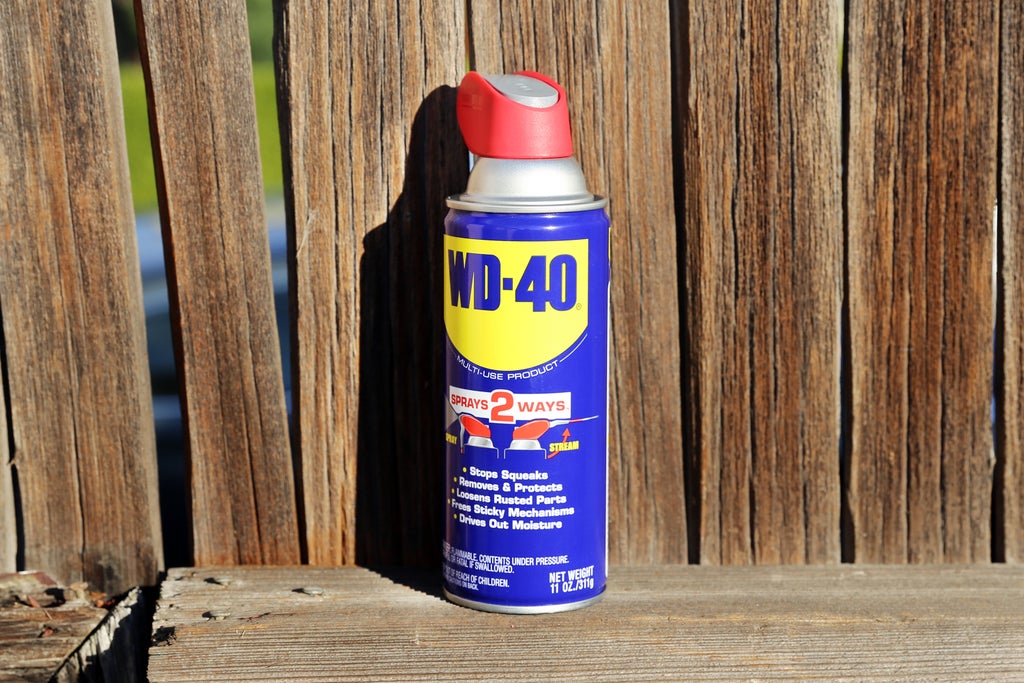
Do you have your own unusual use for WD-40?I want to see it!
Happy making :)






